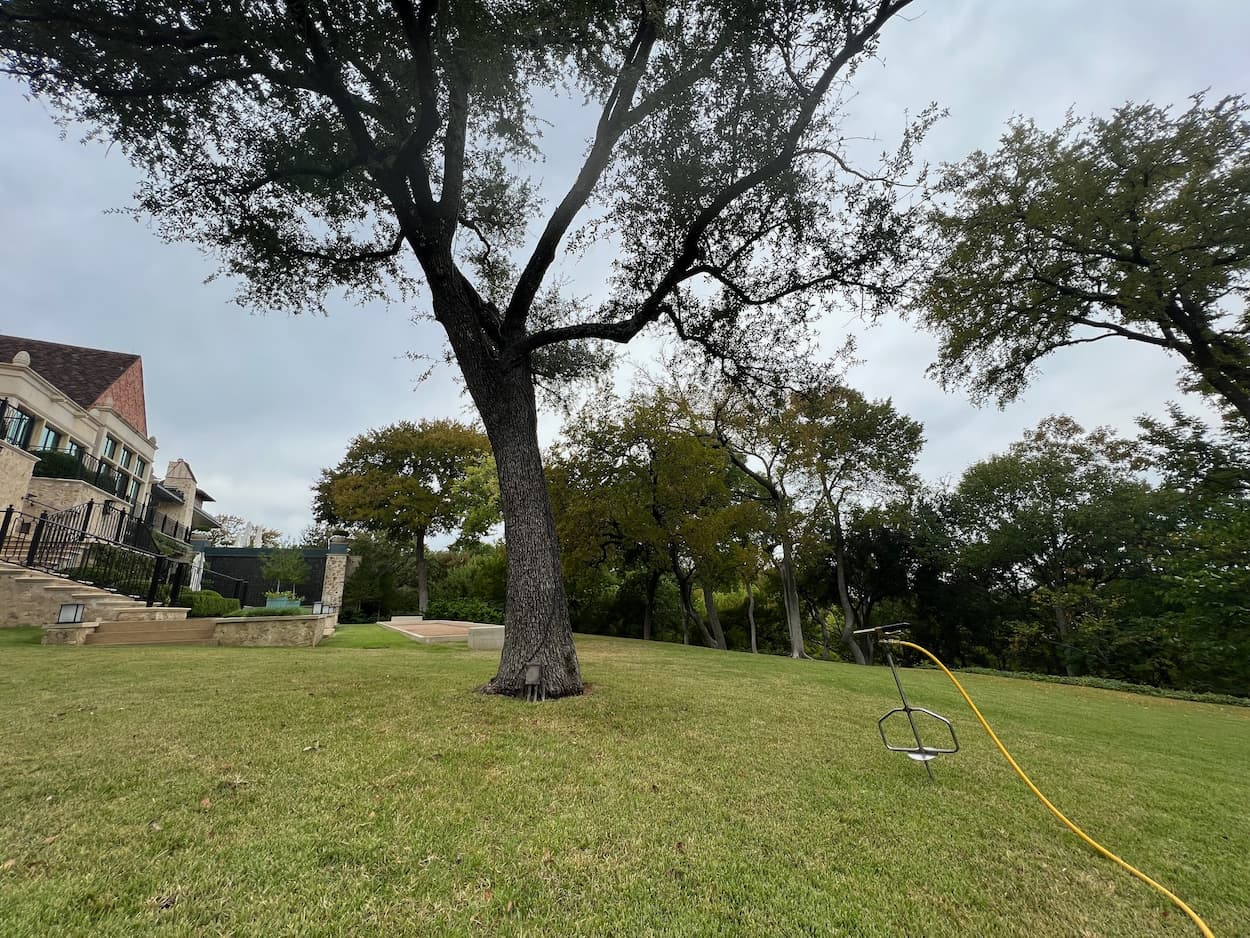Texas Shrubs & Tree Health Care Experts
Caring For Texas Shrubs & Trees Since 1990 Get A Free QuoteCall (817) 880-6130Tree & Shrub Pest Treatment Services in Dalworthington Gardens, TX
Our ISA Certified Arborist Can Help Treat Your Trees and Shrubs From Pests in Dalworthington Gardens, TX.
Arborist USA provides Tree & Shrub Pest Treatment Services in Dalworthington Gardens, Texas, and the surrounding areas.
Situated in Texas, Dalworthington Gardens boasts a rich variety of trees and shrubs, providing the city with a unique ecological charm. However, these green inhabitants face constant threats from a suite of pests, necessitating the deployment of effective tree and shrub pest treatments to protect Dalworthington Gardens’ natural splendor.
In conclusion, the preservation of Dalworthington Gardens’ verdant environment heavily relies on the prompt and effective treatment of tree and shrub pests. Prioritizing this enables Dalworthington Gardens to uphold its natural beauty and exhibit a commitment to an environment-friendly approach, ensuring a green future for subsequent generations.
If you are in need of Tree & Shrub Pest Treatment Services in Dalworthington Gardens, TX, please get in touch with Arborist USA today by calling us at (817) 880-6130, your Tree & Shrub Disease Specialist.
Signs of a Sick Tree or Sick Shrub
- Dead Branches
- Yellowing Leaves
- Fungi or Decay
- Bark Falling Off
- Discolored or Rusted Leaves
- Dying Tree or Shrub
- Leaf Discoloration
- Root or Insect Damage
- Leaves look like they’re being eaten
- Bark is Peeling
- Holes in leaves
- Holes on Bark or Branches
- Stunted Growth
- Canopy Dieback
- Bark Abnormalities
- Wilting
Tree & Shrub Helpful Tips
1. Types of Pests:
Trees and shrubs in Dalworthington Gardens are often targeted by pests like aphids, caterpillars, beetles, borers, mites, and scale insects. Swift identification and prompt treatments can limit the damage these pests can inflect.
2. Signs of Infestation:
Symptoms such as discolored or wilted leaves, premature leaf drop, abnormality in bark (like holes), stunted plant growth, and canopy dieback are indicators of a possible pest infestation. Early recognition of these signs can lead to effective pest management.
3. Importance of Immediate Treatment:
Delayed treatment of pest infestations can result in severe health deterioration of trees and shrubs sometimes leading to their death. Addressing pest infestations immediately can prevent irreversible damage and save on costs related to plant replacement.
4. Role of Professional Services:
Professional pest treatment services are equipped to accurately identify pest species and devise effective treatment plans. They provide ongoing monitoring and adjust treatment protocols as needed, ensuring the best possible outcome.
5. Treatment Techniques:
The applied treatment methods depend on the pest type and infestation severity. These may include biological control (using natural predators), chemical control (pesticides), cultural control (adequate tree care practices), or mechanical control (direct pest removal).
6. Preventive Measures:
Preventing pest infestations is as important as treating them. Proactive measures including regular tree pruning, appropriate fertilization, and watering, and promoting plant diversity can deter pests and reduce potential infestations.
7. Integrated Pest Management (IPM):
IPM combines several pest control strategies for maximum efficiency while minimizing environmental impact, making it an ideal approach for sustainable pest management in Dalworthington Gardens.
8. Balancing Pest Control and Biodiversity:
While controlling pests is crucial, safeguarding beneficial insects and local wildlife calls for a well-balanced pest management strategy. Professionals, with their industry knowledge, are apt at handling this complex balance.
9. Community Involvement:
The involvement of residents plays a pivotal role in pest management, from spotting early infestation signs to implementing preventive care and promptly seeking professional help when necessary.
10. Raising Awareness:
Community education about local pests, symptoms of an infestation, and effective control methods empowers residents to actively safeguard their green environment.
If you’re concerned or have any further questions about our Tree & Shrub Pest Treatment Services in Dalworthington Gardens, TX, or surrounding areas in North Texas, please call us at (817) 880-6130.
Tree & Shrub Pests
Listed below are common Tree & Shrub Pests found in Texas.
Aphids
A white soft body insect that creates a sticky "honey dew" structure on limbs or leaves, blocking nutrients.
Bagworms
Bagworms lay eggs that create small cone-shaped structures less than three inches in length.
Beetles
An invasive wood borer that is subject in all wood tissue that causes severe decline in trees health.
Gypsy Moth
A larva that boars into leaf structure that cause lesser of a foliation and decline in overall leaf structure.
Oak Gall
A growth deformity known as a "gall" commonly occur on oak trees subject to branches and other structures.
Termites
Termites, wood-destroying insect, eats away at all wood tissue, damaging the structures of the trees.
Twig Girdlers
Being a member of the long-horned beetle family, these girdlers are known to eat leaf and other tree areas.
Webworms
These caterpillars spin white webbing bag nests in tree branches and eat your tree foliage (leaves).
Certifications




Our Reviews

A+ BBB Rating based on 31 BBB Reviews
4.8/5.0 based on 83 Top Rated Local Reviews
4.6/5.0 based on 36 Facebook Reviews
4.0/5.0 based on 4 Trust Pilot Reviews

4.9/5.0 based on 90 Google Reviews
4.5/5.0 based on 13 Yelp Reviews
29 Recommendations on Nextdoor
Total Reviews: 286 ![]() Real Customer Reviews
Real Customer Reviews







